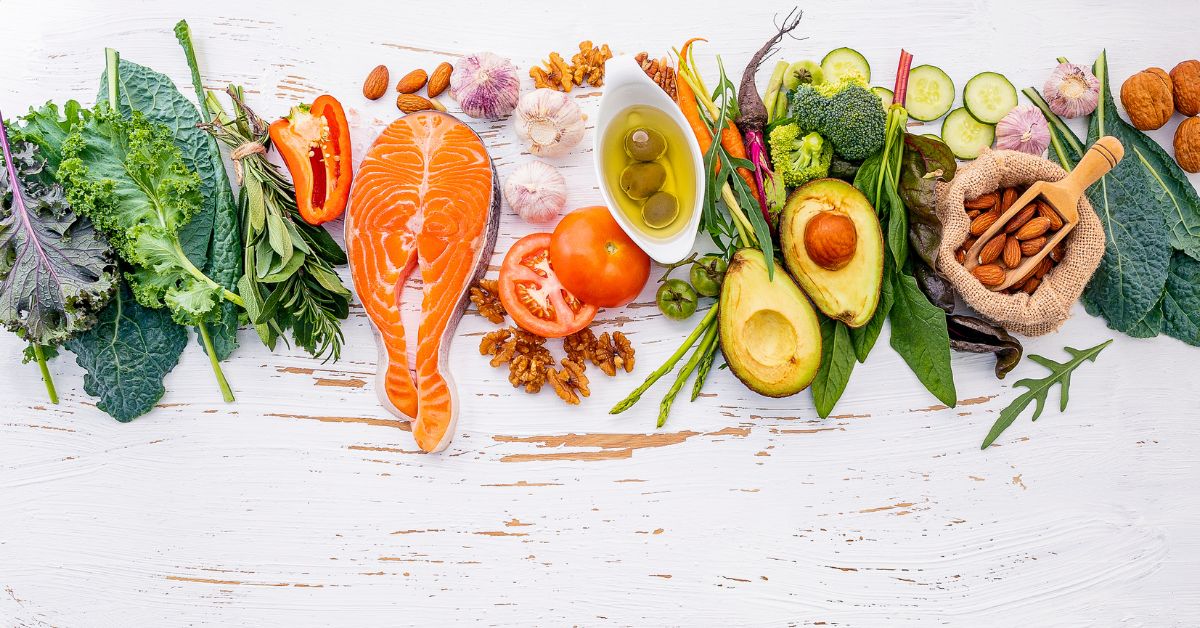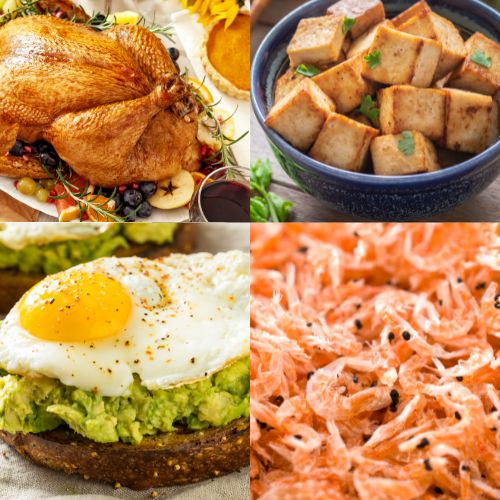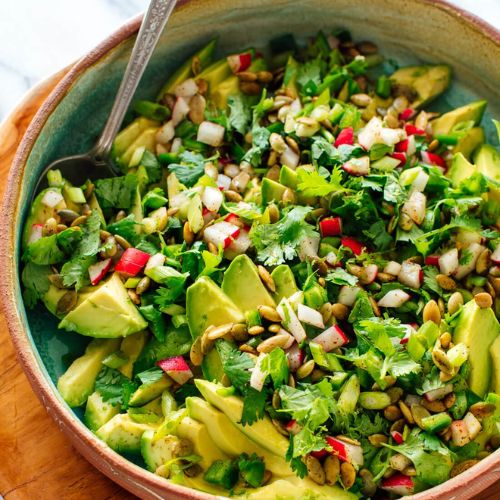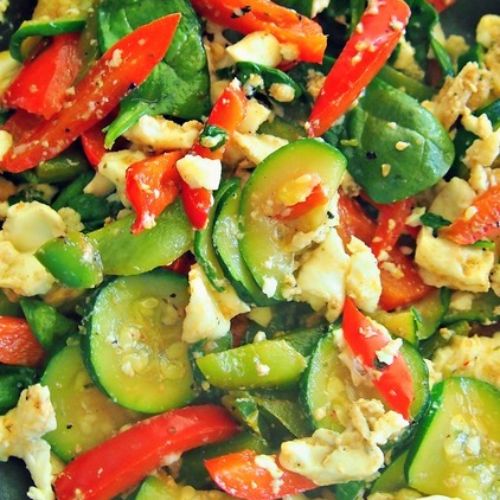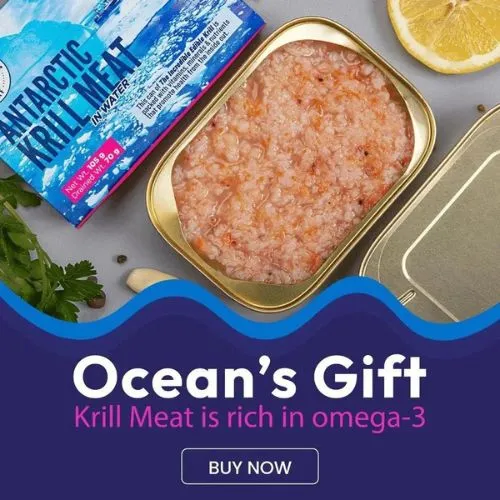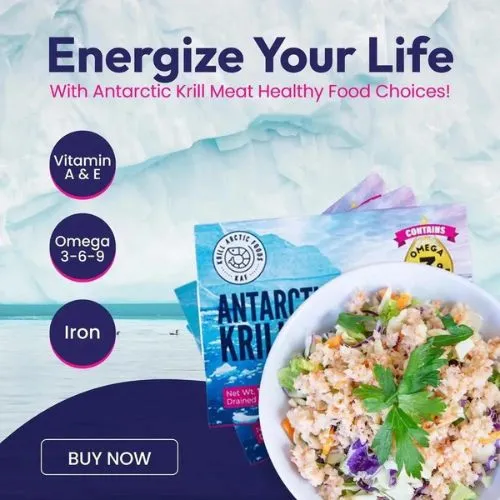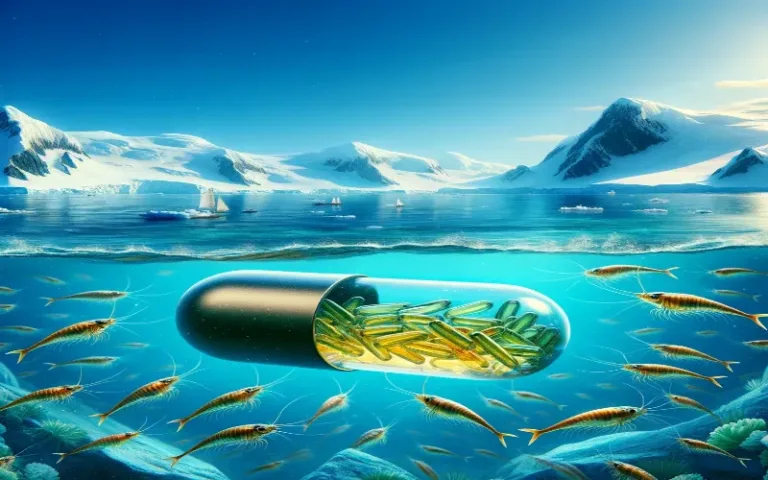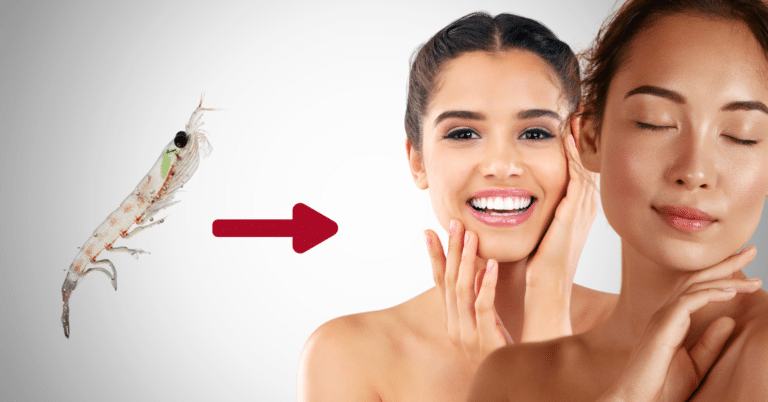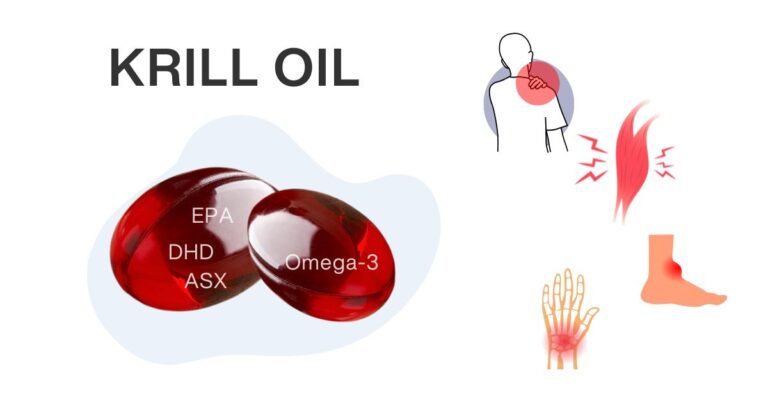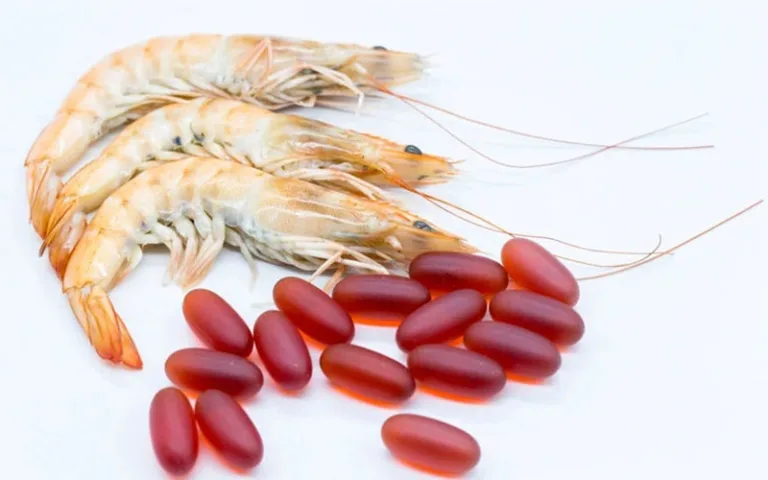Imagine it’s lunchtime, you’re at work, and you’re trying to stick to your weight loss goals, but the usual salad or sandwich just isn’t cutting it anymore. You need something easy, filling, and low-carb to stay on track. If this sounds familiar, you’re not alone.
Studies show that low-carb diets can be an effective way to lose weight and manage cravings, but finding the right meals to keep things interesting can be a challenge.
In this article, we’ll explore some tasty, low-carb lunch ideas that not only help with weight loss but are also simple to make. We’ll cover everything from classic options like salads and wraps to a unique addition—krill meat—that’s packed with nutrients and perfect for your low-carb goals.
Whether you’re meal prepping for the week or looking for quick, healthy options, these ideas will keep your lunches both satisfying and on track.
What Should a Low-Carb Lunch Include?
Building a balanced low-carb lunch isn’t about just cutting out carbs—it’s about making smart choices to fuel your body with the nutrients it needs to thrive. A well-rounded low-carb meal includes three key components: protein, healthy fats, and vegetables. Together, these elements create a meal that keeps you satisfied, energized, and on track with your weight loss goals.
Protein: The Building Block of a Low-Carb Lunch
Protein is the cornerstone of any low-carb meal. It helps build and repair muscle, supports your metabolism, and keeps you feeling full longer. Without enough protein, your body might burn muscle instead of fat, which is the opposite of what you want when trying to lose weight.
Think of protein as the anchor that keeps your hunger in check. Opt for lean, high-quality sources like grilled chicken, turkey, eggs, tofu, or krill meat. For example, a krill meat salad not only provides a hearty dose of protein but also delivers essential omega-3 fatty acids, supporting both fat loss and heart health. By including protein in your lunch, you ensure that you stay satisfied well into the afternoon, avoiding those mid-day cravings that can often derail your progress.
Healthy Fats: The Slow-Burning Fuel
Healthy fats are your body’s best friend when carbs are low. They provide a steady, slow-burning source of energy, keeping you full and helping to stabilize your blood sugar. Without carbs to rely on, your body turns to fats for fuel, making them crucial in a low-carb diet.
Imagine you’re on a road trip—healthy fats are like the long-lasting fuel that keeps the engine running smoothly, while carbs are the quick-burning fuel that runs out fast. By including fats from sources like avocado, olive oil, nuts, or seeds, you can prevent energy crashes and feel more satisfied after your meal. Drizzling olive oil over a fresh salad or adding a scoop of guacamole to turkey lettuce wraps ensures you get those healthy fats that keep your body burning fat efficiently.
Vegetables: Low in Carbs, High in Nutrients
Vegetables are your best low-carb ally. They provide vitamins, minerals, and fiber, which are essential for your overall health, all while keeping your carb intake in check. Non-starchy vegetables like leafy greens, bell peppers, zucchini, and spinach are perfect additions to any low-carb lunch.
Think of vegetables as the foundation of your meal—they add color, texture, and nutrients without adding unnecessary carbs. They also help you stay fuller longer due to their high fiber content, supporting digestion and gut health. By adding a variety of colorful veggies to your plate, you’re not only improving your health but also making your meals more enjoyable and satisfying.
Top 5 Easy Low-Carb Lunch Ideas for Weight Loss (with Recipes)
When it comes to finding low-carb lunch ideas for weight loss, simplicity and flavor make all the difference. You don’t need complicated recipes or unusual ingredients to make meals that are both satisfying and supportive of your goals. What you need are balanced meals that combine protein, healthy fats, and vegetables to keep you full and energized without overloading on carbs. Let’s dive into five easy, delicious ideas—complete with simple recipes.
1. Grilled Chicken and Avocado Salad
A fresh, vibrant salad with lean protein and healthy fats that keep you full for hours.
Ingredients:
- 1 grilled chicken breast (sliced)
- ½ avocado (sliced)
- 2 cups mixed greens
- ½ cucumber (sliced)
- ¼ bell pepper (sliced)
- 1 tbsp olive oil (for dressing)
- Salt and pepper to taste
Recipe:
- Toss mixed greens, cucumber, and bell pepper in a bowl.
- Add grilled chicken and avocado slices on top.
- Drizzle with olive oil, season with salt and pepper, and enjoy!
Why it works: This simple yet powerful combination fuels your body without weighing you down. You can easily customize it by adding different vegetables like cucumbers or bell peppers for crunch, or a sprinkle of seeds or nuts for texture.
2. Egg and Spinach Frittata
Comfort food that’s low in carbs and rich in protein, perfect for meal prepping.
Ingredients:
- 6 eggs
- 1 cup fresh spinach (chopped)
- ¼ cup mushrooms (optional)
- ¼ cup shredded cheese (optional)
- Salt and pepper to taste
- 1 tbsp olive oil
Recipe:
- Preheat oven to 350°F (175°C).
- In a bowl, whisk eggs with salt and pepper.
- Sauté spinach and mushrooms in olive oil for 2-3 minutes, then pour the eggs over.
- Stir in shredded cheese if using, then transfer to an oven-safe dish.
- Bake for 15-20 minutes or until set. Slice and serve.
Why it works: This frittata is incredibly low in carbs, high in protein, and nutrient-rich. It’s ideal for prepping ahead—slice it up for easy grab-and-go lunches throughout the week.
3. Zucchini Noodles with Pesto
Craving pasta but want to skip the carbs? Zoodles are the perfect low-carb alternative.
Ingredients:
- 2 zucchinis (spiralized into noodles)
- 2 tbsp basil pesto (store-bought or homemade)
- ½ cup grilled shrimp or tofu (for protein)
- 1 tbsp olive oil
- Salt and pepper to taste
Recipe:
- Heat olive oil in a pan and lightly sauté zucchini noodles for 2-3 minutes.
- Toss with basil pesto and grilled shrimp or tofu.
- Season with salt and pepper, then serve immediately.
Why it works: This dish gives you the look and feel of pasta without the guilt. Tossed in flavorful pesto and paired with protein, it’s a low-carb meal that satisfies your cravings without overloading on carbs.
4. Turkey Lettuce Wraps with Guacamole
A fresh, low-carb alternative to sandwiches, with a satisfying crunch and creamy guacamole.
Ingredients:
- 4 large lettuce leaves (romaine or butter lettuce)
- 4 slices of turkey breast
- ½ cup guacamole
- Sliced tomatoes, cucumbers, or peppers (optional)
Recipe:
- Lay the turkey slices on lettuce leaves.
- Spread a spoonful of guacamole on each turkey slice.
- Add sliced veggies if desired, then wrap and enjoy.
Why it works: Turkey lettuce wraps are versatile and refreshing. The guacamole adds healthy fats to keep you satisfied, while the lettuce brings a crisp alternative to bread.
5. Krill Meat Salad with Lemon Vinaigrette
A unique, protein-packed salad featuring krill meat, full of nutrients and omega-3s.
Ingredients:
- 3 oz krill meat (cooked)
- 2 cups mixed greens
- ½ cucumber (sliced)
- 1 tbsp olive oil
- 1 tbsp lemon juice
- Salt and pepper to taste
Recipe:
- Arrange mixed greens and cucumber slices on a plate.
- Add krill meat on top.
- Drizzle with olive oil and lemon juice, then season with salt and pepper. Enjoy!
Why it works: Krill meat is a fantastic low-carb, high-protein choice, packed with omega-3s to support weight loss and heart health. It’s light, flavorful, and perfect for adding variety to your low-carb lunch routine.
Why Choose Krill Meat Over Other Proteins?
When it comes to choosing the right protein for a low-carb diet, krill meat stands out as an exceptional choice. While most people are familiar with common proteins like chicken, beef, or even fish, krill meat offers unique benefits that are hard to match. So, why should you consider krill meat for your meals?
Rich in Omega-3 Fatty Acids
Unlike other protein sources, krill meat is packed with omega-3 fatty acids, which are known for their heart-health benefits. These essential fats support brain function, reduce inflammation, and promote cardiovascular health. If you’re trying to combine lean protein with the added health benefits of omega-3s, krill meat delivers both in one convenient package. Think of it as getting a double dose of nutrition without any extra effort.
High-Quality, Lean Protein
Krill meat provides all the essential amino acids your body needs to repair and build muscle, making it a great option for weight loss and muscle maintenance. It’s lean, light, and easy to digest, unlike some heavier meats that can leave you feeling sluggish. Plus, because krill is lower in calories than other protein options, it helps you stay on track with your weight loss goals while still feeling full and energized.
Sustainable and Eco-Friendly
If sustainability is important to you, krill meat is a fantastic choice. Krill are abundant in the oceans, and responsible harvesting practices ensure that krill fishing has a low environmental impact. Choosing krill not only supports your health but also contributes to a more sustainable food system. It’s a simple way to make more environmentally conscious choices in your diet.
Versatile and Delicious
Krill meat is incredibly versatile. Whether you’re tossing it into a salad, using it in a lettuce wrap, or adding it to a frittata, it blends well with many flavors and textures. Its light, delicate taste makes it a refreshing alternative to stronger-tasting proteins like fish or beef. If you’re looking for a protein that adds variety to your meals without overpowering other ingredients, krill meat is a great option.
Benefits of Low-Carb Lunches for Weight Loss
When it comes to losing weight, low-carb lunches can be a game changer. But why are they so effective? It all starts with how your body processes carbohydrates.
Managing Blood Sugar Levels
Carbohydrates break down into sugar, which causes spikes in blood sugar levels. This might give you a quick energy boost, but it’s often followed by a crash that leaves you feeling tired and hungry. Reducing carbs helps keep your blood sugar balanced, leading to:
- Steady energy throughout the day
- Fewer cravings and no mid-afternoon energy dips
- Better control over hunger and reduced temptation to snack
Boost Your Energy with Protein and Fats
Low-carb lunches aren’t just about cutting carbs—they’re also about incorporating protein and healthy fats, which are essential for sustained energy and weight loss:
- Protein: Found in chicken, eggs, tofu, and krill meat, protein helps repair muscles and keeps you fuller for longer. It also supports fat loss by maintaining muscle mass.
- Healthy fats: Sources like avocados, nuts, and seeds provide long-lasting energy, preventing you from feeling drained after meals.
Promoting Fat Burning
With fewer carbs, your body doesn’t have quick sugars to burn for energy. Instead, it taps into stored fat, helping you burn fat more efficiently. A low-carb lunch supports:
- Consistent fat burning throughout the day
- Increased energy from fat stores, rather than quick-burning sugars
- Improved weight loss results by utilizing stored fat as fuel
Long-Lasting Energy Without Crashes
Low-carb meals act like fuel for a long journey. Rather than burning out quickly, they provide a steady source of energy. Here’s the difference:
- Carb-heavy meals: Quick energy, followed by crashes and increased hunger
- Low-carb meals: Steady energy, balanced blood sugar, and long-lasting fullness
By choosing low-carb, high-protein, and healthy-fat lunches, you’re giving your body the tools to burn fat more effectively. It’s a simple, sustainable way to avoid energy crashes and cravings while helping your body work with you, not against you, on your weight loss journey.
Overcoming Challenges in a Low-Carb Diet
Low-carb diets can offer fantastic results, but they’re not without challenges. Whether you’ve felt bored with limited food options or struggled with fatigue, sticking to a low-carb plan can sometimes feel tricky. But with the right adjustments, you can overcome these common hurdles and maintain your progress.
Avoiding a Lack of Variety
One of the most frequent complaints about low-carb diets is the lack of variety. Eating the same thing every day can get dull fast. To keep things exciting:
- Mix up protein sources like krill meat, tofu, or shrimp to bring different textures and flavors to your meals.
- Incorporate colorful vegetables like bell peppers, zucchini, and spinach to add essential nutrients without increasing carbs.
Fighting Fatigue
Feeling sluggish after switching to a low-carb diet? That initial fatigue can be frustrating but normal as your body adjusts. To combat this:
- Focus on getting enough healthy fats and protein, such as krill meat, which is rich in omega-3s and helps sustain energy.
- Stay hydrated—low-carb diets often lead to water loss, which can drain energy. Drink plenty of water and consider adding a pinch of salt or using electrolyte supplements to maintain energy levels.
Preventing Nutrient Deficiencies
Cutting carbs sometimes means missing out on key nutrients. It’s like building a house without enough bricks. To prevent deficiencies:
- Focus on nutrient-dense, low-carb foods like leafy greens, broccoli, and peppers, which are packed with vitamins and minerals while keeping carbs low.
Keep Your Low-Carb Lunches Exciting
Another common pitfall is getting stuck in a food rut. Eating the same meals every day can kill your motivation. To keep things interesting:
- Rotate meals like a playlist—swap in a frittata one day, turkey lettuce wraps another, and a krill meat salad the next.
- Regularly changing your meals helps prevent boredom and keeps you excited about your low-carb plan.
By using bullet points, the content is now easier to skim and digest, making the key points stand out more clearly for the reader. This format helps to break down the information into manageable chunks without overwhelming the reader with long paragraphs.
Conclusion
To wrap it up, navigating a low-carb diet doesn’t have to feel restrictive or monotonous. By incorporating a variety of nutrient-dense foods like krill meat, avocados, and colorful vegetables, you can create balanced meals that not only support weight loss but also keep you energized and satisfied. The key to long-term success is variety—rotating your proteins, experimenting with healthy fats, and keeping your meals fresh and interesting.
Healthy fats, such as those from avocado and olive oil, help your body burn fat more efficiently, while proteins like krill meat provide essential nutrients and keep hunger at bay. Staying hydrated and mindful of potential nutrient deficiencies will help prevent fatigue and ensure your body gets everything it needs.
By mixing up your meal options, staying fueled with the right ingredients, and listening to your body’s needs, you can avoid common pitfalls and sustain your low-carb journey. With the right mindset and meal plan, eating low-carb becomes not only manageable but enjoyable.
FAQs
Why should I consider a low-carb diet for weight loss?
Low-carb diets can be highly effective for weight loss because they help your body switch from burning carbs for energy to burning fat. This shift, called ketosis, reduces blood sugar spikes, curbs cravings, and supports fat-burning, making it easier to stick to your weight loss goals.
Why are healthy fats important in a low-carb diet?
Healthy fats, like those found in avocado, olive oil, and nuts, provide steady energy and keep you full longer. They also help your body burn fat more efficiently by stabilizing blood sugar and preventing cravings, especially in the absence of carbs.
Can I get enough nutrients on a low-carb diet?
Yes! By focusing on nutrient-dense foods like leafy greens, broccoli, and bell peppers paired with diverse proteins like krill, eggs, or chicken, you can ensure you’re getting the vitamins and minerals you need while keeping your carb count low.
How can I use krill meat in my meal prep?
Krill meat is highly versatile. You can toss it into salads, mix it with greens in wraps, or add it as a topping to a low-carb dish like zucchini noodles or a frittata. It’s quick to prepare and keeps well, making it an excellent addition to your weekly meal prep.

